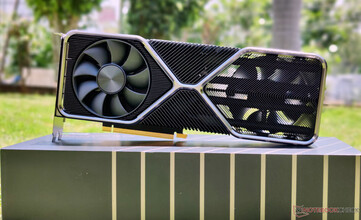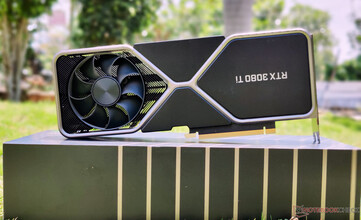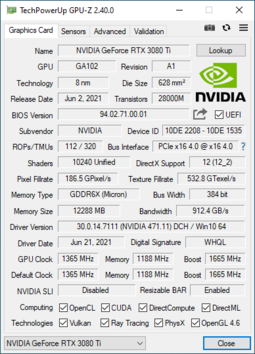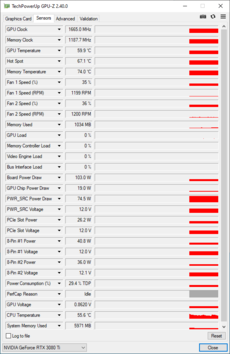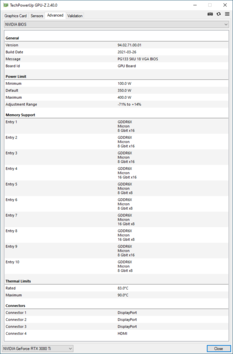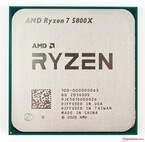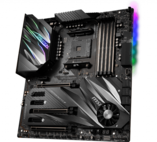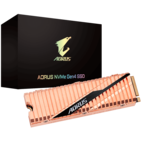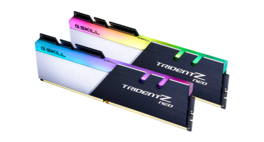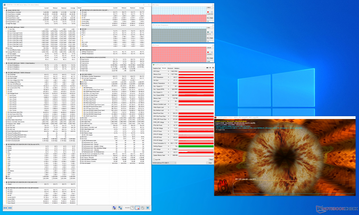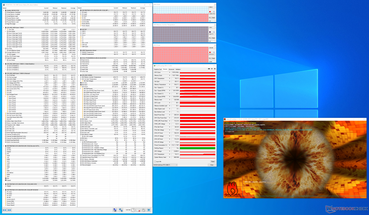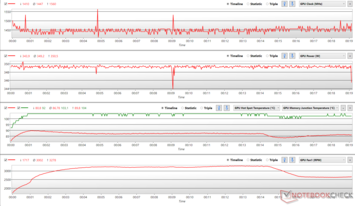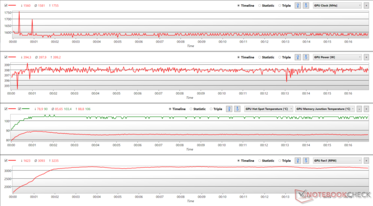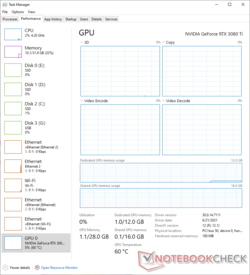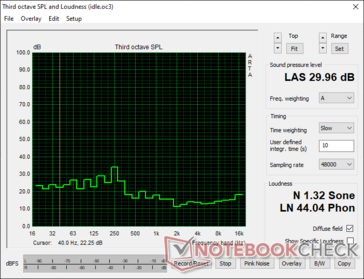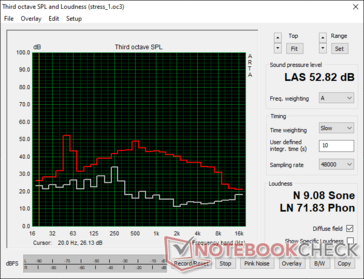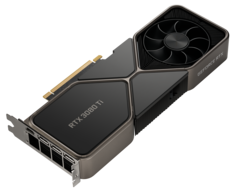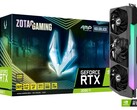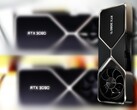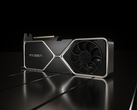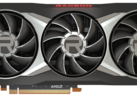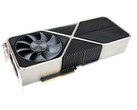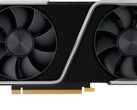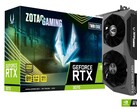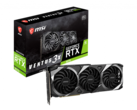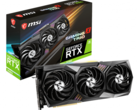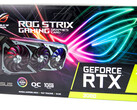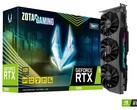NVIDIA GeForce RTX 3080 Ti Founders Edition Review: RTX 3090 performance for less but still a low value proposition
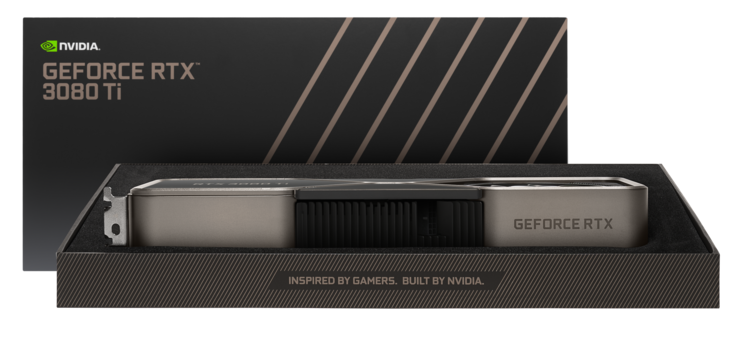
NVIDIA launched the GeForce RTX 3080 Ti during Computex 2021 last month alongside the RTX 3070 Ti. The RTX 3080 Ti is a slightly cut-down version of the "BFGPU" RTX 3090 and is more of a mid-cycle refresh than anything revolutionary. Essentially, we are looking at a better binned Ampere GA102 chip than the RTX 3080.
The RTX 3080 Ti now supplants the RTX 3080 as NVIDIA's flagship gaming GPU. It arrives at a time when GPU availability is still a concern with most cards selling out quickly and at a significant markup above MSRP. The RTX 3080 Ti can also be viewed as NVIDIA's riposte to a resurgent AMD, which seems to have got its mojo back with the launch of RDNA 2-based GPUs. The Radeon RX 6900 XT comes within striking distance of the RTX 3090 in several titles, meaning gamers need not look up to NVIDIA alone for a flagship gaming experience as long as ray-tracing performance is not the main purchasing criterion.
Though positioned between the RTX 3080 and the RTX 3090, the RTX 3080 Ti leans more towards RTX 3090-levels of performance and is priced at a US$1,199 MSRP to match. While this is US$300 less than that of the RTX 3090's MSRP (US$1,499), it is also US$500 dearer than the RTX 3080 (US$699). In India, the RTX 3080 Ti Founders Edition (FE) retails for ₹1,22,000.
In this review, we put the RTX 3080 Ti Founders Edition through its paces and see how well this mid-cycle refresh augurs for gamers looking to purchase a new GPU.
Comparison of the RTX 3080 Ti with other NVIDIA GPUs
| Specification | RTX 3090 FE | RTX 3080 Ti FE | RTX 3080 FE | RTX 3070 FE | RTX 3060 Ti FE | Titan RTX | RTX 2080 Ti | TITAN X Pascal |
| Chip | GA102 | GA102 | GA102 | GA104 | GA104 | TU102 | TU102 | GP102 |
| FinFET process | 8 nm | 8 nm | 8 nm | 8 nm | 8 nm | 12 nm | 12 nm | 16 nm |
| CUDA cores | 10,496 | 10,240 | 8,704 | 5,888 | 4,864 | 4,608 | 4,352 | 3,584 |
| Texture units | 328 | 320 | 272 | 184 | 152 | 288 | 272 | 224 |
| Tensor cores | 328 3rd Gen. | 320 3rd Gen. | 272 3rd Gen. | 184 3rd Gen. | 152 3rd Gen. | 576 2nd Gen. | 544 2nd Gen. | — |
| RT cores | 82 | 80 | 68 | 46 | 38 | 72 | 68 | — |
| GPU base clock | 1,395 MHz | 1,365 MHz | 1,440 MHz | 1,500 MHz | 1,410 MHz | 1,350 MHz | 1,350 MHz | 1,417 MHz |
| GPU boost clock | 1,695 MHz | 1,665 MHz | 1,710 MHz | 1,750 MHz | 1,665 MHz | 1,770 MHz | 1,545 MHz | 1,531 MHz |
| Memory bus | 384-bit | 384-bit | 320-bit | 256-bit | 256-bit | 384-bit | 352-bit | 384-bit |
| Memory bandwidth | 936 GB/s | 912 GB/s | 760 GB/s | 448 GB/s | 448 GB/s | 672 GB/s | 616 GB/s | 480.4 GB/s |
| Video memory | 24 GB GDDR6X | 12 GB GDDR6X | 10 GB GDDR6X | 8 GB GDDR6 | 8 GB GDDR6 | 24 GB GDDR6 | 11 GB GDDR6 | 12 GB GDDR5X |
| Power consumption | 350 W | 350 W | 320 W | 220 W | 200 W | 280 W | 250 W | 250 W |
A tour of the NVIDIA GeForce RTX 3080 Ti FE
Design-wise, there is no difference between the Founders Editions of the RTX 3080 and the RTX 3080 Ti in terms of looks save for the new SKU name. Despite sporting near-RTX 3090 specs, NVIDIA has chosen to retain the 2-slot design of the RTX 3080.
While this is good for case aesthetics, it does not exactly bode well for cooling and fan noise levels as we shall see below. The dual 9-blade 85 mm fans do a decent job at keeping the card somewhat cool, and the metal backplate helps in better heat dissipation to the surroundings. The thermal solution is capable-enough, but it does not quite seem to be in the same league as that of the RTX 3090.
As is the hallmark for Ampere FE cards, we get to see the 12-pin Molex MicroFit 3.0 power connector in the top middle; there's a dual-8-pin to 12-pin connector provided in the box. Connectivity options are the standard fare and include one HDMI 2.1-out and three DisplayPort 1.4a outs. DisplayPort 1.4a enables the RTX 3080 Ti to drive two 8K 60 Hz displays with a single cable each without breaking much sweat while HDMI 2.1 allows for 4K 144 Hz and 8K 30 Hz output.
As is the case with most FE cards, the GeForce RTX logo glows in white and cannot be controlled by RGB software. However, it is possible to control some of the lighting on the inner frame via Corsair iCUE or other third-party RGB apps.
NVIDIA offers a standard three-year warranty on all GeForce Founders Editions cards.
The RTX 3080 Ti FE offers a base clock of 1,365 MHz and 1,665 MHz boost. There is scope for attaining boost beyond this value although we did not find it being able to cross the 2,000 MHz mark like the RTX 3090. The RTX 3080 Ti is rated at a 350 W TGP. It is possible to increase the power target by another 14% to about 400 W, but we ran into stability issues during stress testing.
The RTX 3080 Ti FE maxes out the GDDR6X memory's 384-bit bus, which enables only two VRAM capacities — 12 GB and 24 GB. NVIDIA has reserved the 24 GB offering for the RTX 3090 with an aim to entice creative pros who also game, with the RTX 3080 Ti having to contend with 12 GB. While the card seems to have only 2 GB extra VRAM compared to the RTX 3080, we are looking at a 20% increase in memory bandwidth at 912 GB/s that should augur pretty well for dealing with heavy in-game textures at least in the current crop of AAA titles.
The test bench — Based on the AMD Ryzen 7 5800X and X570 platform
We used an AMD Ryzen 7 5800X as the processor of choice. The Ryzen 7 5800X was paired with an MSI Prestige X570 Creation motherboard, 32 GB (16 GB x2) of G.SKILL Trident Z Neo DDR4-3200 RAM (timings 16-19-19-39), and a Gigabyte Aorus NVMe Gen4 1 TB SSD.
Windows 10 21H1 with the latest cumulative updates (Build 19043.1081) was installed on the Aorus NVMe Gen4 PCIe SSD while two 1 TB Crucial MX500 SATA SSDs were used for running benchmarks and games. Resizable BAR was enabled in the UEFI, which may lend a slight performance improvement in select titles.
Cooling the Ryzen 7 5800X was a Corsair iCUE H115i Elite Capellix AIO cooler. The build was housed in a Corsair iCUE 4000X RGB case with a Thermaltake Toughpower 850 W 80 Plus Gold as the power supply of choice. All testing was performed with the case closed to represent typical usage.
A OnePlus U Series 55U1 smart TV running at 4K 60 Hz in Game Mode was connected to the RTX 3080 Ti via HDMI. Color output was set to full 32-bit RGB in the NVIDIA control panel and Windows desktop scaling was set to 100%.
We would like to thank AMD for facilitating the Ryzen 7 5800X CPU, Corsair for the iCUE Elite Capellix AIO cooler and iCUE 4000X case, and OnePlus for the U series 55U1 4K TV.
Synthetic benchmarks — On par with the RTX 3090
The NVIDIA RTX 3080 Ti presents an interesting picture when it comes to benchmark results — both synthetic and real world. For all intents and purposes, we are indeed looking at an RTX 3090 here. The RTX 3080 Ti is just two streaming multiprocessors (SMs) short of the RTX 3090 and, for the most part, this seems to have little to no impact in most benchmarks. We do see the RTX 3080 Ti performing better than the RTX 3090 in a handful of tests, probably because software and drivers could have improved over time.
In 3DMark, AMD's RDNA 2-based RX 6800 XT and RX 6900 XT do have a perceivable edge in all the Fire Strike Graphics tests, though the RTX 3080 Ti more or less ties with the RTX 3090 in Time Spy Graphics. Compared to the RTX 3080, the RTX 3080 Ti can be anywhere between 13% and 17% faster in Fire Strike Graphics depending on the resolution while being only 9% better in Time Spy Graphics.
As expected, NVIDIA cards easily ace their RDNA 2 rivals in the Port Royal ray-tracing benchmark with the RTX 3080 Ti on par with the RTX 3090 and about 13% and 34% faster than the RTX 3080 and Radeon RX 6900 XT, respectively.
The performance gap between the RTX 3080 Ti and RTX 3090 seems to widen somewhat in Unigine, particularly in the OpenGL versions of Heaven and Valley benchmarks. Superposition shows the RTX 3090 and RTX 3080 Ti to be on par with each other. The only exception here is seen in the 720p Low component of the test where the RTX 3080 Ti is nearly 25% ahead of the RTX 3090 probably because this resolution is more CPU-bound. In general, we see that the RTX 3080 Ti is about 14% faster than the average RTX 3080 at resolutions 1080p and above.
Do note that we have used a different CPU this time, the Ryzen 7 5800X, which may impact some of the synthetic benchmark results.
| 3DMark 11 Performance | 41396 points | |
| 3DMark Fire Strike Score | 32491 points | |
| 3DMark Fire Strike Extreme Score | 21605 points | |
| 3DMark Time Spy Score | 17433 points | |
Help | ||
Compute benchmarks — Good gains over the RTX 3080 and RX 6900 XT
The RTX 3080 Ti only has a very slight edge over the average RTX 3090 in ComputeMark overall while being 16% faster than the average RTX 3080 and the RX 6900 XT. A similar trend is seen in the LuxMark Room GPU test as well. However, AMD has a very significant lead over all NVIDIA offerings in the LuxMark Sala GPU test. While the RTX 3080 Ti is about 15% faster in Sala GPU compared to the average RTX 3080, it is 53% behind the Radeon RX 6900 XT.
Geekbench compute tests show the RTX 3080 Ti having good leads overall. It ties with the RTX 3090 in OpenCL but is interestingly 27% faster in the Vulkan version of the test.
Game benchmarks — RTX 3080 Ti scores a home run at 4K Ultra
NVIDIA pitches the RTX 3080 Ti as the flagship gaming GPU, and it does not disappoint. A good number of titles are playable at fully maxed out settings at 4K close to the 100 fps mark. Only a handful of games such as Cyberpunk 2077 (DLSS off), Total War: Three Kingdoms, and Watch Dogs: Legion (DLSS off) struggle to attain the 60 fps sweet spot at 4K Ultra. Those desirous of making the most of their high-refresh rate displays stand to benefit by lowering the resolution to 1440p.
For the most part, the RTX 3080 Ti FE is well-within the margin of error of the RTX 3090's gaming performance. The slight reduction in CUDA cores and halving the memory from the RTX 3090 seems to have negligible effect in current titles. This is a good thing as it translates to a straight US$300 savings (at MSRP!) from the RTX 3090 if your primary use case is 4K Ultra 60 fps+ gaming.
We found the RTX 3080 Ti to be anywhere between 11% and 22% faster than the Radeon RX 6900 XT in our game test suite. That being said, the Radeon RDNA 2 cards did have an edge in Assassin's Creed Valhalla (+11%, 6900 XT) and Hitman 3 (+7%, 6900 XT).
We tested ray-tracing performance in titles such as Call of Duty: Black Ops Cold War, Metro Exodus, Resident Evil Village, and Control with DLSS off and, quite interestingly, the RTX 3080 Ti seemed to offer perceivable benefits over even the RTX 3090 with RT On. Compared to the RTX 3080, we are looking at anywhere between a 12% and 21% uplift in RT performance depending on the resolution.
NVIDIA seems to have done a good job with the thermals as is evident by the fairly consistent performance near to the 174 fps mark observed in The Witcher 3 stress test at 1080p Ultra. However, we do find that the card can afford attaining a higher fps albeit for a brief period of about five minutes before falling back to the original value. This could probably be due to an opportunistic clock increase at this point during the stress test.
| low | med. | high | ultra | QHD | 4K | |
|---|---|---|---|---|---|---|
| The Witcher 3 (2015) | 174 | 149 | ||||
| Shadow of the Tomb Raider (2018) | 178 | 157 | 93 | |||
| Battlefield V (2018) | 196 | 192 | 136 | |||
| Far Cry New Dawn (2019) | 122 | 118 | 100 | |||
| Metro Exodus (2019) | 131 | 110 | 74.2 | |||
| The Division 2 (2019) | 143 | 121 | 76.6 | |||
| Total War: Three Kingdoms (2019) | 151.2 | 103.4 | 51.4 | |||
| Control (2019) | 181 | 122 | 64.9 | |||
| Borderlands 3 (2019) | 129 | 114 | 71.2 | |||
| Red Dead Redemption 2 (2019) | 112 | 92.5 | 62.7 | |||
| Doom Eternal (2020) | 388 | 316 | 191 | |||
| Gears Tactics (2020) | 141.1 | 147.5 | 88.3 | |||
| Mafia Definitive Edition (2020) | 163 | 142 | 86.6 | |||
| Watch Dogs Legion (2020) | 97 | 88.5 | 58.7 | |||
| Dirt 5 (2020) | 163 | 136 | 92.4 | |||
| Assassin´s Creed Valhalla (2020) | 100 | 86 | 61 | |||
| Call of Duty Black Ops Cold War (2020) | 162 | 131 | 76.5 | |||
| Cyberpunk 2077 1.0 (2020) | 125 | 84.3 | 42.3 | |||
| Hitman 3 (2021) | 267 | 210.4 | 119.6 | |||
| Outriders (2021) | 148 | 151 | 83.7 | |||
| Resident Evil Village (2021) | 234 | 199 | 114 | |||
| Days Gone (2021) | 178 | 137 | 83.3 |
Emissions — Inconsistent at 350 W TGP
The RTX 3080 Ti is rated at a TGP of 350 W, which can be increased by another 14% to 400 W as specified in the VBIOS. Stressing the card with FurMark at 350 W (100% power target) results in the GPU core hitting 80 °C and the clocks hovering around 1,440 MHz. We did notice the card lowering its power target, sometimes down to 345 W, owing to the set temperature target at 83 °C during which the clocks momentarily increase up to a maximum of 1,550 MHz. NVIDIA could have done a better job with the cooling system, though as the fans seemed to throttle by nearly 1000 RPM towards the end of the run, sensing a momentary drop in hot spot temperature.
Increasing the power target to 114% (400 W) via the built-in performance tool in GeForce Experience offers a much different picture. We not only see higher clocks (1,590 MHz) but also a better sustained boost without major spikes despite the core attaining similar temperature levels. The auto-lowering of the TGP is also much less-pronounced at 114% power target than before and the fans also seem to be able to keep up quite nicely. However, we found that pushing the card to 400 W can be quite unstable at times, resulting in crashes.
A 350 W TGP is the default power configuration, but the card does not show a consistent clock profile during stress. Enthusiasts may see the benefit in upping the power target a bit in the interest of higher and more stable boosts.
Overall, it seems as if NVIDIA has shoehorned a near-full RTX 3090 GA102 GPU into an RTX 3080 chassis resulting in thermal and stability issues when pushed to the hilt. That being said, we didn't run into any throttling issues during gaming so these inconsistencies may not be immediately noticeable in real-world usage.
Power Consumption
At idle, the RTX 3080 Ti has a total board power draw of about 103 W with the GA102 chip drawing 21 W. Under load, the GA102 GPU can draw 172 W for itself when the card is set at a TGP of 350 W. These figures resemble what we had earlier seen with the MSI GeForce RTX 3080 Gaming X Trio GPU, which sports a 340 W TGP. The RTX 3090 FE actually comes across as a more economical option when considering power consumption under stress. Increasing the power target to 400 W consequently results in the GPU core drawing 210 W under load. Comparatively, the RX 6900 XT's core draws about 255 W during FurMark stress at a 100% power target.
Temperature
For some reason, our RTX 3080 Ti FE unit always posted a core temperature of 60 °C even under idle. Though NVIDIA has implemented a complete fan-stop mode in all Ampere FE cards, due to such idle temperatures, we found the fans to be always spinning at 36% (~1,230 RPM). This is despite Windows Task Manager reporting 0% activity on all GPU parameters. We also tried setting the Power Management mode to "Normal" in the NVIDIA Control Panel, but that didn't seem to have any effect. It is possible that this could be an isolated problem with our unit, so we have reached out to NVIDIA for further clarification.
While the core itself reached about 80 °C under load, the surface temperatures are about as expected. We recorded 66 °C near the GPU core area and about 62 °C near the VRMs and memory in an ambient temperature of about 23 °C. The presence of a metal backplate seems to be an advantage here in efficient surface heat dissipation. Nevertheless, given NVIDIA's new fan design, we cannot emphasize enough the requirement of good case cooling to drive the hot air outside.
Since the rear fan exhausts towards the AIO cooler and system RAM, good case cooling can help prevent heat build-up on components above the card as seen in the adjoining heatmap. Undervolting the card using third-party utilities may help in further lowering temperatures. Adequate ambient cooling helps too.
Noise Levels
We evaluated fan noise levels at a distance of 20 cm from the closed case with all other system fans turned off except for the Corsair H115i Capellix AIO pump, which was set to operate under the Quiet profile. As indicated earlier, we never quite experienced a complete fan-stop with our unit. Therefore, the noise levels under idle seemed to be somewhat on the higher side and were close to 30 dB(A).
Upon starting FurMark stress at a 100% power target, we noticed that the noise levels can increase up to 50 dB(A). We recorded a maximum sound pressure level of 53 dB(A) during the duration of the test.
Real-world usage isn't likely to be as stressful, but the high noise levels can get quite disconcerting while gaming. We also noticed some coil whine when the fans ran at full speed. Once again, it is possible that this could be just a bad sample. However, it is clearly evident that the dual 85 mm fans have to do more work in order to properly cool the near-full GA102 GPU, resulting in perceivably higher fan noise than a typical RTX 3080 FE card.
Pros
Cons
Verdict — Performance gains and pricing don't scale well
For perhaps the first time, gamers have to face a triple whammy of supply chain constraints, inflated prices, and the ephemeral cryptocurrency mining craze. On the bright side, AMD's new found resurgence has brought back some much needed competition in the flagship GPU space. The NVIDIA GeForce RTX 3080 Ti Founders Edition arrives at such a crucial juncture in GPU history.
The RTX 3080 Ti FE brings all the goodness of Ampere's Founders Edition design, which seems to be giving add-in board (AiB) cards a run for their money. The chassis is premium and, unlike the mammoth RTX 3090 FE, it sports a sleek 2-slot design. NVIDIA continues to use the 12-pin power connector, which can make cable management a cumbersome affair if you don't have a modern PSU with a 12-pin PCIe connector.
However, we did observe that the RTX 3080 Ti FE does not seem to benefit entirely from NVIDIA's new Founders Edition design. We observed frequent clock ramping, high temperatures, and high noise levels during testing. Keeping aside the possibility that this could be an isolated issue with our review sample, for all intents and purposes, the RTX 3080 Ti is almost an RTX 3090 at heart. Thus, using this chip in a chassis meant for the RTX 3080 is bound to result in a few incongruencies when it comes to thermals.
The NVIDIA GeForce RTX 3080 Ti offers RTX 3090-levels of gaming performance at an MSRP that is US$300 lower. While this is no doubt the halo GPU that hardcore gamers would crave for, it is also nearly twice as dear as the RTX 3080 for nominal performance gains in most titles.
The RTX 3080 Ti aims to supplant the RTX 3080 as the flagship Ampere GPU for gaming, and it is able to do so quite easily. However, we are only looking at about less than 15% advantage in 4K Ultra in most titles. The other way to look at it is that the RTX 3090 has a less than 5% lead over the RTX 3080 Ti in most games, so you can save a bit with the RTX 3080 Ti if gaming is the primary use case — provided you are able to actually buy the card, that is. Given that the RTX 3080 Ti is almost on par with the RTX 3090 in both synthetics and games, it makes sense to go for the latter only if you really need all the 24 GB VRAM goodness for creative tasks.
If you're not bothered about ray-tracing performance or DLSS, AMD's Radeon RX 6800 XT and RX 6900 XT are still highly relevant competitors to the RTX 3080 Ti FE and are available at much lesser MSRPs. That being said, AMD's ray-tracing performance is already RTX 2080 Ti-level and the company is also bringing out its own DLSS alternative named FidelityFX Super Resolution (FSR), which should further enhance RDNA 2's prospects.
Those looking at playing at QHD resolutions or below are better served by the RTX 3070 and RTX 3060 Ti unless really high frame rates are required to keep pace with high-refresh rate displays.
Price and availability
Availability of GPUs at MSRPs is still an ongoing concern well into 2021. The RTX 3080 Ti Founders Edition is out of stock at most online retailers. AiB cards from the likes of MSI, Asus, EVGA, Zotac, and Gigabyte seem to have a much better availability but at a significantly high markup. For instance, the MSI Gaming GeForce RTX 3080 Ti Gaming X Trio currently retails close to the US$2,400 mark on Newegg and Amazon. Best Buy, however, lists both the RTX 3080 Ti FE and other AiB variants as sold out. The situation at Walmart is no better either with cards such as the Zotac AMP Holo GeForce RTX 3080 Ti being sold at a whopping US$3,399. We recommend waiting a bit longer for prices to normalize before deciding on a purchase.




